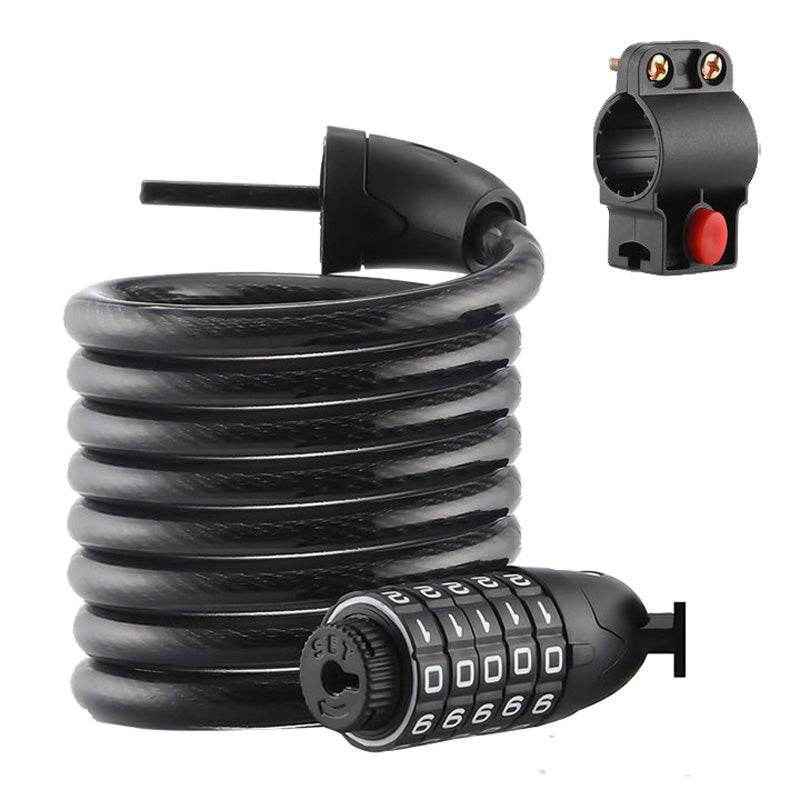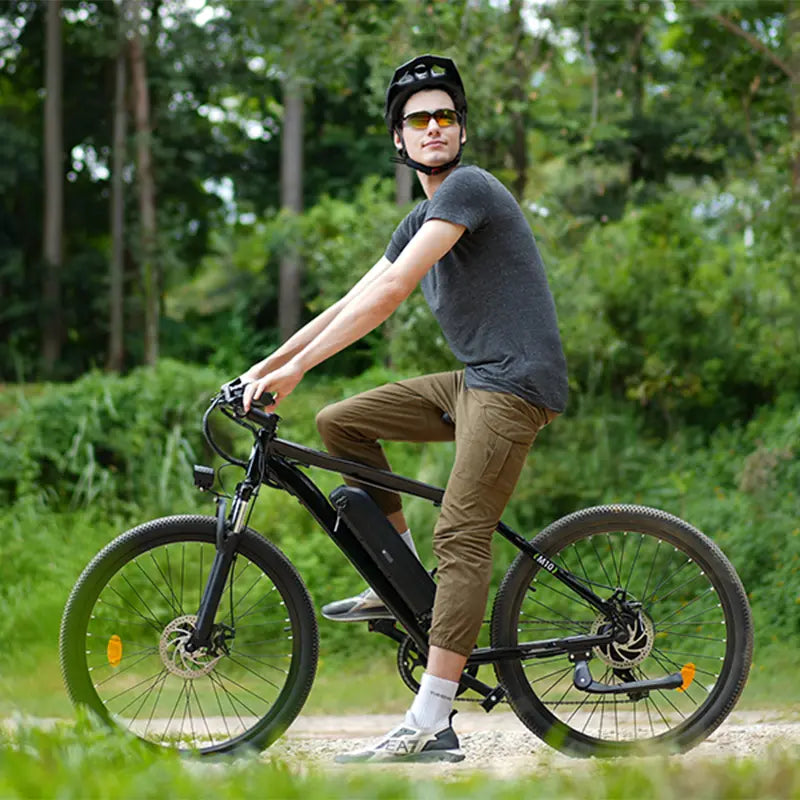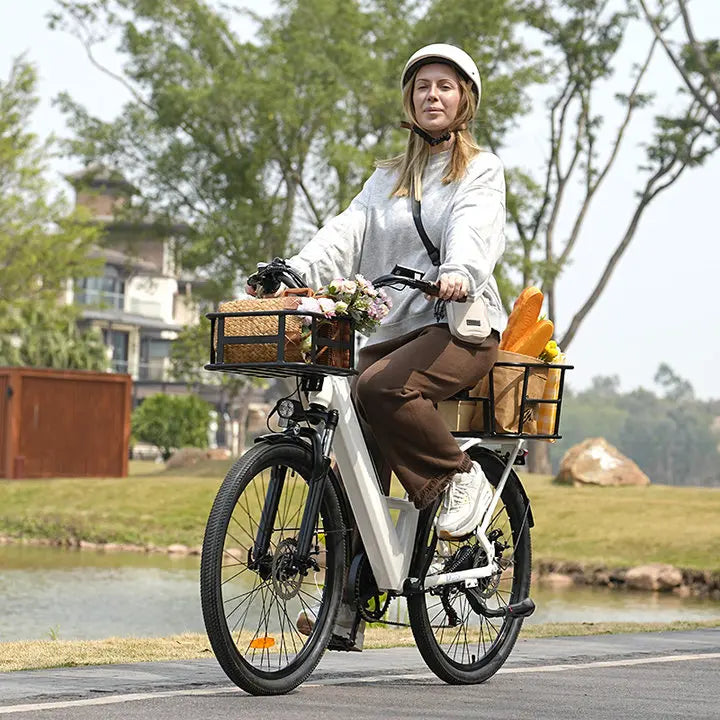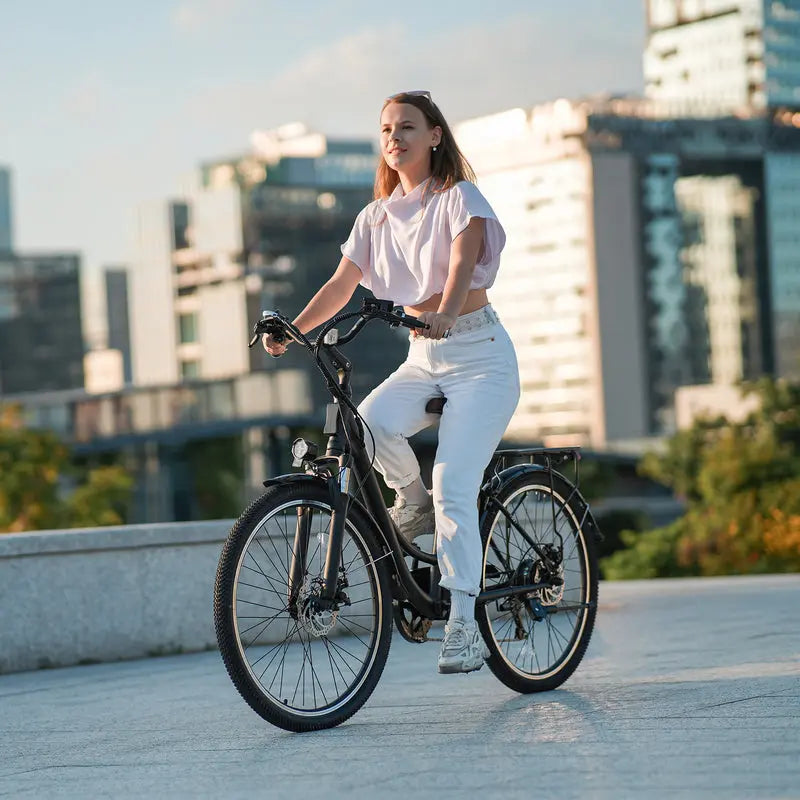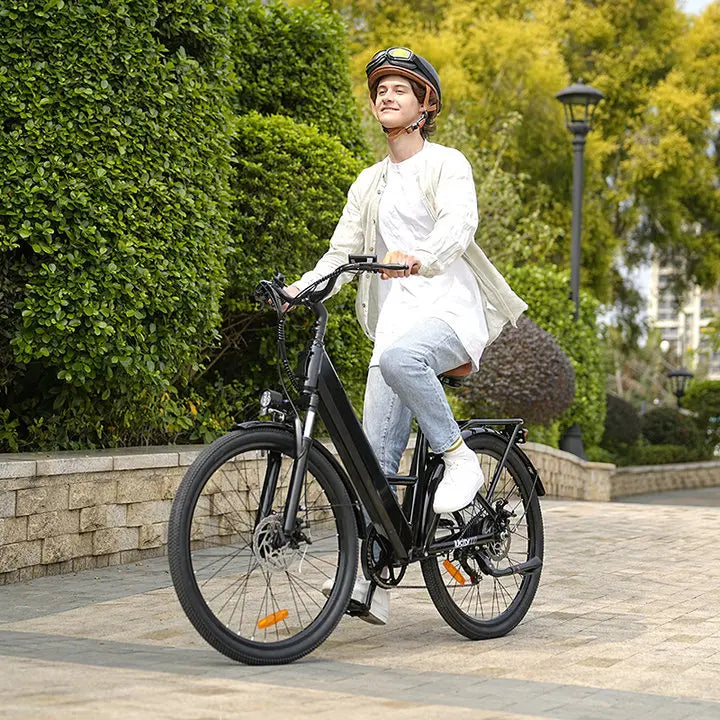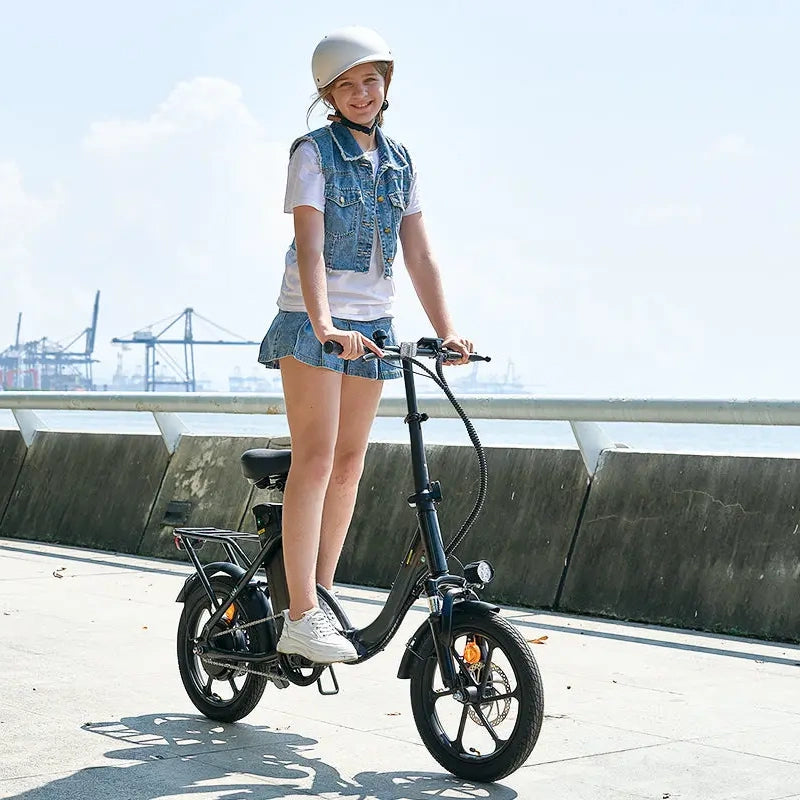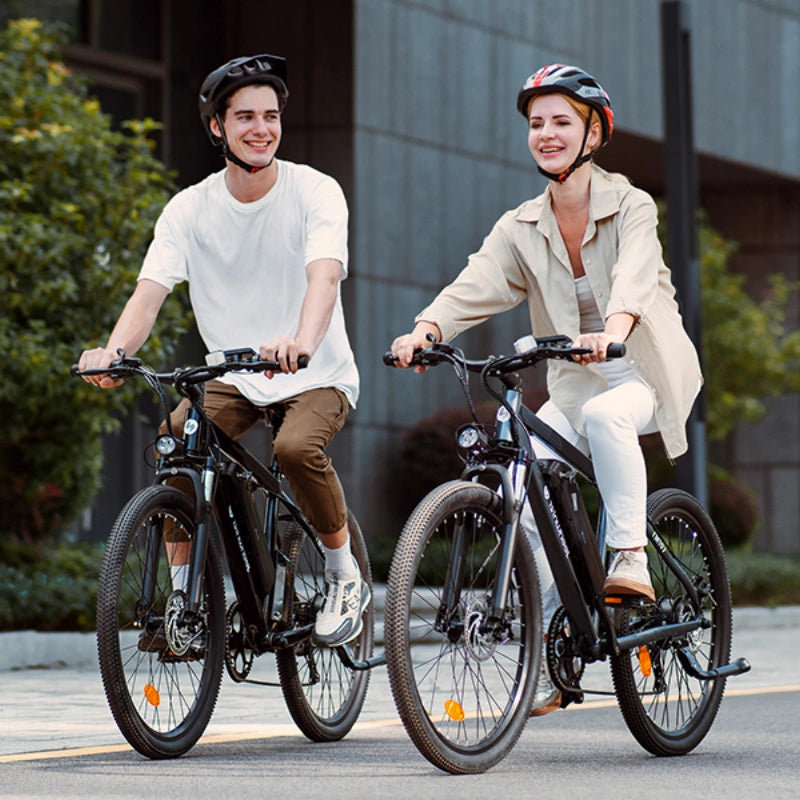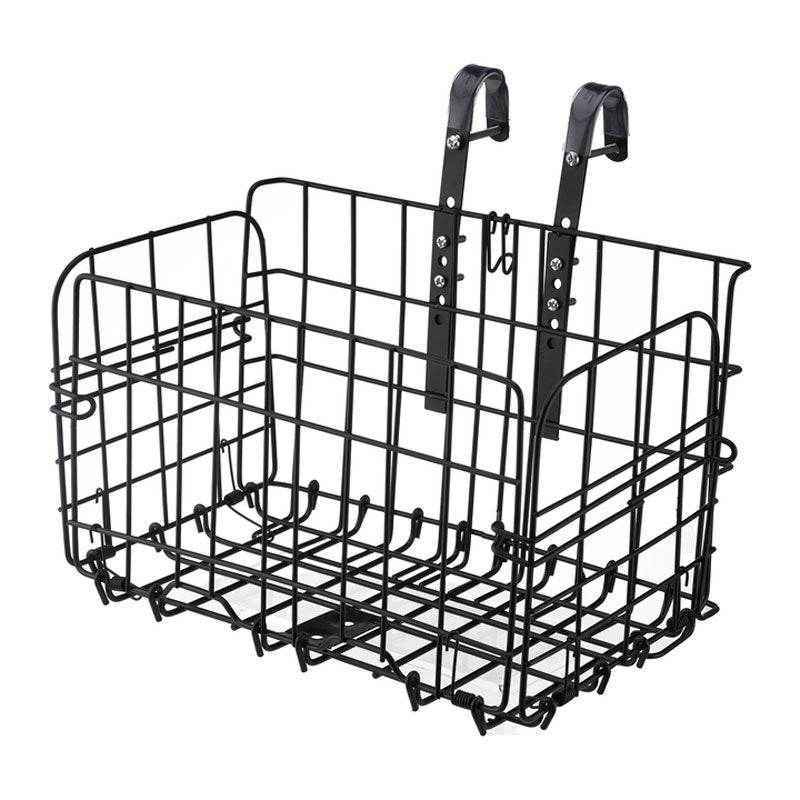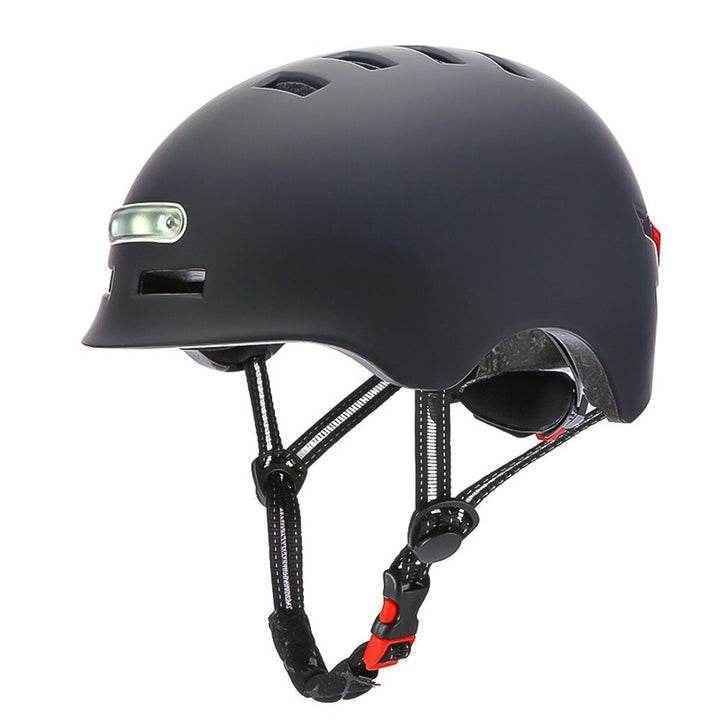How Do Electric Bikes Work: A Comprehensive Guide for All Your Biking Needs
How Do Electric Bikes Work: A Comprehensive Guide for All Your Biking Needs
Have you seen a bike that is going much faster than usual while walking along the road or driving to work? That's an electric bike!
According to a February 2024 report from the Department of Transport (DOT), one in twenty people in the UK already has an e-bike, and nearly 40% of people surveyed said they would cycle more if they had an e-bike.
This report also reveals that the term 'electric bike' appears in online searches over 2.4 million times annually in the UK. By 2030, Europe will sell 30 million bikes yearly, 50% of which will be electric.
Whether you're a keen cyclist or want a sustainable form of transport, you're probably wondering how electric bikes work.
Read our essential guide to e-bikes, containing everything you need to know about electric cycles and how they work. It's packed with expert advice and tips to help you choose the best e-bike model.
How Do Electric Bikes Work
Electric bikes are just like a standard push bike, so you can pedal them. However, they have a battery and motor, which can assist you, for example, in climbing hills or on long bike rides. Electric bikes are sometimes called e-bikes or pedelecs.
You use an e-bike like a standard bike, so you pedal and steer with the handlebars. The concept is that the electric motor assists the rider but doesn't replace the usual pedalling. Don't worry – you'll still stay fit!
The motor is there to help manage hard work like pedalling into a headwind or cycling up a hill. How do electric bikes work on hills? They take the strain, so you don't have to. It's one of the reasons why an e-bike is becoming the 'go-to' choice for the morning commute; you don't have to arrive looking like you've just finished a road race!
Electric Bike Components
Electric bikes are a new and innovative technology, so designs change regularly. However, at the core of any e-bike, there are three things you'll find as extras within the design compared to a standard cycle. These are:-
· An e-bike motor
· An e-bike battery
· E-bike sensors
How do electric bike components work together?
The pedal-assist process on e-bikes works differently depending on the cycle manufacturer. However, the motor operation is pretty much uniform across all brands. The components are designed to work together and sync with manual pedalling.
Pedalling activates the bike's motor, and the battery provides it with a constant supply of electrical energy.
The motor triggers a sensor. E-bikes have two types of sensors: torque sensors and speed sensors. The choice of sensor on the bike reflects the kind of cycle and its intended usage.
A torque sensor provides a small amount of assistance to mirror your moving speed, whereas a speed sensor provides active ride assistance, starting the motor as soon as you move.
How do electric bike brakes work?
Brake levers, one on each handlebar, are attached to a cable that links to brake calipers. Brake pads are connected to the calipers and apply force to the spinning wheel when you pull the lever. The harder you pull, the more force is applied to the wheel. These are called rim brakes, just like on a traditional bicycle.
Different e-bike brakes include rim, drum, mechanical, and hydraulic disc brakes. Some e-bikes feature a regenerative braking system that captures the kinetic energy produced during braking, converts it into electrical energy, and then stores it in the bike's battery.
Electric bikes are heavier and travel faster than conventional bikes, so the braking system is even more critical. The braking system will depend on your riding habits, the terrain, and the bike's weight.
E-bikes often have hydraulic disc brakes as they are usually heavier; a lightweight version may operate fine with a simpler braking system.
How do electric bike controllers work?
The e-bike controller is like the onboard computer in your car; it controls and coordinates the bike's operation, combining manual pedal power with electric propulsion. Essentially, the controller operates the bike motor based on the information it receives.
Energy flows from the battery to the motor based on information from the bike's user inputs (pedal assist and throttle control) and signals from the sensors. The sensors track data like the amount of power the rider generates and the bike's speed.
The controller processes all the bike's data from the pedal assist, the motor, and the battery, and sends output signals to control the electric motor. It effectively translates all the information to regulate the amount of power supplied to the motor.
The controller operates the flow of electricity, which is crucial to the bike's performance. It also has a vital safety role, ensuring the motor operates within safe, defined limits.
How do electric bike conversion kits work?
It wasn't long before someone worked out how to add a motor and battery to a regular bike, heralding the arrival of e-bike conversion kits. The advantage to the bike owner is that they can get an e-bike by converting their current cycle without having to fork out a lot of money for a new model.
Electric bike conversion kits work in different ways, but typically, they add a hub motor to the front or rear of the bike by swapping the wheel for one with a motor or a drive unit near the bike's crank. You can also get kits that fit inside the frame; these are inconspicuous and are more expensive as a result.
However, like buying an e-bike, you need to know a bit about what you're doing if you want to buy a conversion kit and fit it yourself.
A bike conversion kit must create a legal cycle for use on UK roads, so you should only consider buying from a tried and trusted retailer, preferably one that can provide evidence of product testing and reliable results.
If your bike knowledge is pretty basic, consider asking a retailer or specialist to convert your cycle for you. If your bike is in good condition, you can sell it and put the money towards a budget e-bike.
How do electric bike gears work?
Electric bikes are available with and without gears. Pedal assist does the work of a gear change, with the bike's controller identifying when that gear shift is required based on the bike's speed and the terrain. It's a bit like an automatic car versus a manual model.
However, most e-bikes do have gears. The shifter is on the handlebars, and the gears are at the bike's rear. The motor doesn't power the gears; the gears work just like on a traditional cycle.
Gears allow you to ride faster on steep hills and override the top speed of the bike's motor, which may not be fast enough on particularly steep hills. Gears allow you more control over how fast you're going on hilly terrain and how much you need to pedal, and may mean you expend less effort.
Some e-bike cyclists also opt for gears, which allow the rider to choose the resistance level and pedal harder to raise their heart rate.
If you cycle to work out, choosing an e-bike with gears will give you the best of both worlds. You can leisure cycle, tailor the amount of cardiovascular exercise you take, but use the motor more if you're commuting to work during the week.
Also, riding with low pedal assist in a higher gear or even turning off pedal assist altogether can save your battery life. If you're travelling a long distance between charge points, pedalling manually and using the gears can prevent a dead bike.
An e-bike without any gears is called a single-speed electric bike.
How Do Electric Bikes Work: Choosing the Right E-Bike
An e-bike can reflect your riding habits, ambitions, and even the terrain you cycle on. Therefore, understanding the technology and its correlation with manual pedalling is essential to choosing the right electric bike.
Electric bike brands offer a surprising amount of variation, which will likely increase as the technology becomes more sophisticated.
Conclusion
As more and more people look for sustainable and money-saving forms of transport, e-bikes are becoming increasingly popular, particularly in busy urban areas where cycle lanes mean you can beat the queues and park more easily at your destination.
E-bikes are versatile and offer leisure opportunities, including the ability to travel faster and further on trips and holidays. They’re also a cardiovascular workout for fitness fanatics and an easy work commute without turning up and needing a shower!
Industry experts predict electric bike numbers will surge in the UK over the next few years. E-bikes offer superior performance and travel range compared to a conventional bike without the cost and hassle of buying and charging an EV car. Plus, they extend leisure opportunities and are the real deal if you want to stay fit. So, what are you waiting for?
How Do Electric Bikes Work: Frequently Asked Questions
Do you still have to pedal an electric bike?
There are two types of electric bikes. Throttle e-bikes theoretically don't require pedalling, whereas pedal-assist bikes do.
Pedal-assist bikes require the rider to pedal to activate the motor, and the rider can control how much assistance they get. Throttle e-bikes have a throttle like you'll find on a motor scooter, so you can power without pedalling if you want to.
An e-bike is only classified as a bicycle and is legal on the road in the UK if it has pedals that will propel the wheels. Fixed or no pedals means the e-bike must be insured as a moped or a scooter.
What are the disadvantages of electric bikes?
Price is the most apparent and off-putting disadvantage of e-bikes. However, the good news is that demand for e-bikes is rising hugely, so competition in the marketplace means that prices will fall in the months ahead.
Some people are concerned about battery maintenance and replacement; there are some risks associated with battery range and failure.
E-bikes are two or three times heavier than traditional cycles, which can be a problem if you need to carry your bike to a power source to recharge the battery inside your house, a storage location, or transport it in a vehicle.
Do electric bikes charge when you pedal?
It's a common misconception that pedalling an e-bike charges the battery as you cycle along—it doesn't. Like with a standard cycle, pedalling powers the wheels turning, but not much else. You must plug the bike into a power source to recharge the battery.
Some e-bikes have a regenerative braking system that produces a small amount of energy, but not enough to recharge the battery.
Is it harder to pedal an electric bike?
You might think it's harder because of the added weight of the motor and battery, but generally, it's easier; that's the point of pedal assist. However, the ease of pedalling depends on the type of sensor and other factors like the motor and tyre size.
Pedal assist is designed to match your cycle habits, terrain, and fitness ambitions, so it's essential to get the right advice before buying an e-bike.
Do electric bikes need fuel?
Electric bikes don't need fuel, but you must charge the battery at home before you ride. Charging instructions vary according to the bike's manufacturer. Some e-bikes have a removable battery, which makes charging more convenient.
Can you ride an electric bike when it's dead?
In theory, you can ride an e-bike when the battery is flat. However, you won't have pedal assist, so it will be much harder. Remember, an e-bike is heavier than a conventional push bike.
If your bike has hydraulic brakes, these should work even if the battery isn't.












